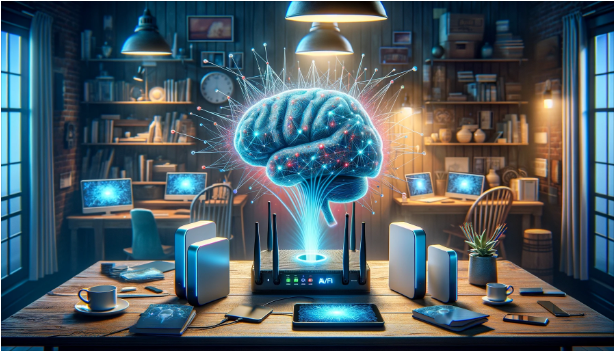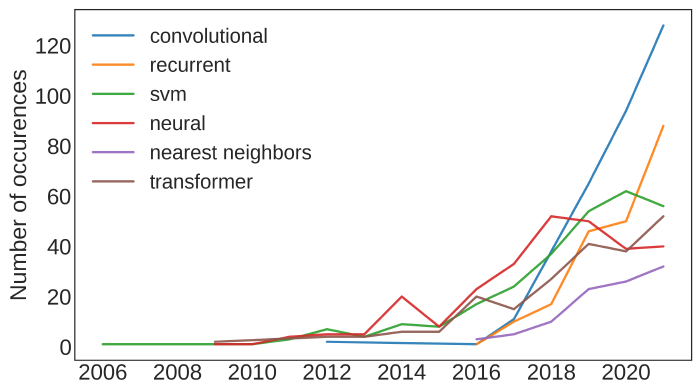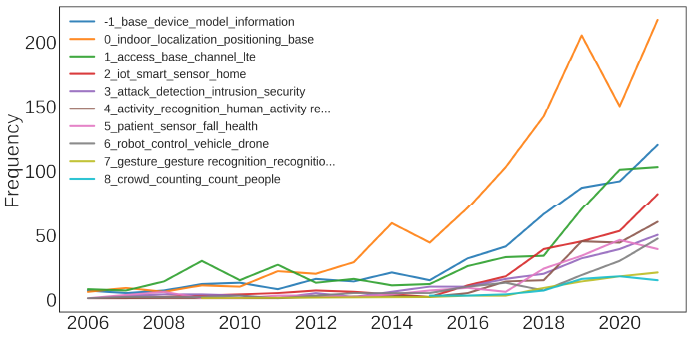|
AI/ML in WiFi
The blending of AI (Artificial Intelligence) and ML (Machine Learning) with the world of Wi-Fi. This isn't just about staying connected to the internet anymore; it's about stepping into a future where technology understands and reacts to our needs in incredibly smart ways.
Think about Wi-Fi not just as a way to surf the web, but as a super-smart assistant that's learning every day how to make our digital world smoother, safer, and more intuitive. This combination of AI/ML and Wi-Fi is quietly revolutionizing everything from the comfort of our homes to the efficiency of workplaces, making smart living not just an idea but a reality.

In this note, we'll look into the exciting advancements this fusion is bringing to our lives. We're talking about homes that adjust to our preferences without us having to lift a finger, networks that fix themselves, and even public spaces that understand and adapt to the flow of people.
Now that we've set the stage for the exciting intersection of AI, ML, and Wi-Fi, let's dive deeper into the "Big Questions" that are at the heart of this technological convergence. This section is where we tackle the real meat of the matter, exploring the specific tasks and breakthroughs that have been made possible by marrying machine learning with Wi-Fi signals, the cutting-edge tools of the trade, and the journey of this field's evolution alongside Wi-Fi technology itself.
Let's start with three important questions suggested by the paper A Systematic Review of Wi-Fi and Machine Learning Integration with Topic Modeling Techniques and share the answers from the paper.
- Which tasks and applications relative to Wi-Fi signals have been tackled with Machine Learning techniques?
- What are the most widely used Machine Learning methods applied to Wi-Fi data?
- How did this field of research develop with respect to the evolution of Wi-Fi technology?
From guiding us within buildings to understanding the patterns of daily life, we'll look at the diverse ways in which Wi-Fi and ML are making our world smarter.
Following table represents a distribution of topics derived from a corpus of documents using the BERTopic topic modeling technique. Each entry in the table corresponds to a specific topic within the field of Wi-Fi and Machine Learning and count/Percentage column represents the number of documents associated with that topic and the percentage of the dataset it represents.
The table highlights the breadth of research within this interdisciplinary field and shows which areas are currently receiving more attention, as well as emerging areas of interest. Indoor Localization and improving wireless network performance through ML are the most heavily researched areas, indicating their importance and potential for future applications
|
Topics
|
Count
|
Percentage
|
|
Indoor Localization
|
1136
|
33%
|
|
ML for Improving Wireless Networks’ Performances
|
537
|
16%
|
|
IoT and Smart Houses
|
280
|
8%
|
|
Privacy and Intrusion detection
|
218
|
6%
|
|
Human Activity Recognition
|
200
|
6%
|
|
Human Condition Monitoring
|
191
|
6%
|
|
Wi-Fi and ML for improving UAVs networks
|
160
|
5%
|
|
Gesture Recognition
|
72
|
2%
|
|
Crowd Monitoring and People Counting
|
70
|
2%
|
|
Others
|
585
|
17%
|
Following is short description for each entries of the table :
- Indoor Localization (33%): This topic is the most prominent in the dataset, indicating a significant research focus on using Wi-Fi signals for determining positions indoors. It makes up one-third of the documents, suggesting that it's a major area of interest in Wi-Fi and ML research.
- ML for Improving Wireless Networks’ Performances (16%): A substantial portion of the research is aimed at enhancing the performance of wireless networks through ML, which could involve optimizing network traffic, improving connection stability, etc.
- IoT and Smart Houses (8%): This topic shows a growing interest in integrating Wi-Fi and ML for smart home applications and IoT devices, which is an emerging field.
- Privacy and Intrusion detection (6%): Research here focuses on using ML to detect unauthorized access or breaches in Wi-Fi networks, indicating the importance of security in wireless communications.
- Human Activity Recognition (6%): Similar to Indoor Localization, this topic involves using Wi-Fi signals to recognize human activities, which has implications for smart homes, security, and healthcare.
- Human Condition Monitoring (6%): This area involves monitoring health or environmental conditions, indicating a crossover between Wi-Fi technology and health or environmental monitoring.
- Wi-Fi and ML for improving UAVs networks (5%): This niche area indicates interest in using Wi-Fi and ML to enhance communication and navigation for UAVs or drones.
- Gesture Recognition (2%): A smaller portion of the dataset, showing that Wi-Fi is being used to detect and interpret human gestures, potentially for controlling devices or for interactive applications.
- Crowd Monitoring and People Counting (2%): This topic involves using Wi-Fi to monitor crowd density or count people, which can be important for security and managing public spaces.
- Others (17%): This category includes documents that may not fit neatly into the other topics but still relate to the integration of Wi-Fi and ML in various ways.
Not all tools are created equal, and some have risen to the top when it comes to interpreting the language of Wi-Fi. We'll introduce you to the frontrunners and why they're leading the pack.
The following table presents a breakdown of the number of papers covering various topics within the field of Wi-Fi and Machine Learning, along with the counts of different machine learning models applied within these topics. This table provides a clear indication of how the field is progressing, with sophisticated ML models becoming increasingly prevalent as Wi-Fi technology itself becomes more capable and ubiquitous.
|
Topic
|
Size
|
NN
|
CNN
|
RNN
|
Transf
|
SVM
|
KNN
|
RF
|
|
Indoor Localization
|
835
|
196
|
29
|
46
|
12
|
80
|
206
|
74
|
|
ML for Improving Wireless Networks’ Performances
|
529
|
161
|
54
|
33
|
10
|
11
|
3
|
16
|
|
IoT and Smart Houses
|
354
|
160
|
89
|
61
|
8
|
50
|
8
|
15
|
|
Privacy and Intrusion detection
|
270
|
47
|
6
|
10
|
3
|
23
|
6
|
11
|
|
Human Activity Recognition
|
211
|
44
|
12
|
7
|
14
|
32
|
5
|
27
|
|
Human Condition Monitoring
|
194
|
51
|
15
|
8
|
2
|
20
|
2
|
13
|
|
Wi-Fi and ML for improving UAVs networks
|
156
|
35
|
13
|
2
|
2
|
6
|
7
|
2
|
|
Gesture Recognition
|
138
|
30
|
57
|
7
|
6
|
16
|
4
|
2
|
|
Crowd Monitoring and People Counting
|
80
|
102
|
5
|
7
|
3
|
7
|
7
|
13
|
|
Others
|
682
|
187
|
59
|
46
|
14
|
49
|
39
|
48
|
Following is short description for each entries of the table :
- Indoor Localization is the most extensively researched topic, with a significant number of papers employing neural networks (NN), especially K-Nearest Neighbors (KNN). This suggests a strong research interest in using ML for locating devices or people inside buildings where GPS is ineffective.
- Machine Learning for Improving Wireless Networks’ Performances is the second-most studied topic. It also has a substantial number of papers that utilize NN, indicating that complex models are being developed to enhance network performance.
- IoT and Smart Houses and Privacy and Intrusion Detection show a balanced use of various ML techniques, including Convolutional Neural Networks (CNN) and Support Vector Machines (SVM). This diversity indicates that these areas may require a variety of approaches to address different challenges in smart environments and security.
- Human Activity Recognition and Gesture Recognition prominently use CNNs and Recurrent Neural Networks (RNN), which are well-suited for recognizing patterns in spatial and time-series data, respectively.
- Human Condition Monitoring, Wi-Fi and ML for improving UAVs networks, and Crowd Monitoring and People Counting have fewer papers but show an interest in using NN and other ML methods to address these niche applications.
- The table also includes a category labeled Others and totals for each ML method, highlighting the overall preference for NNs, particularly CNNs and RNNs, across the field.
- The distribution of ML techniques across the topics suggests that the field is employing a diverse set of tools to tackle various problems, with a clear inclination towards more sophisticated models like NNs.
- The development of the research field mirrors the evolution of Wi-Fi technology, as newer methods like CNNs and RNNs are being adopted alongside traditional methods like KNN and SVM.
There is a plot from the paper that I want to share in this note. The plot is a graphical representation of the usage over time of different machine learning (ML) models in the context of Wi-Fi related research. It shows the number of occurrences (i.e., the frequency of mentions or use) of various ML models in academic papers or projects from 2006 to early 2020s

This is what the plot implies :
- The trends indicate the growing interest and application of these models in Wi-Fi related research. The sharp increase in mentions of convolutional and recurrent neural networks from around 2014 onwards suggests that these models have become particularly prominent, likely due to their effectiveness in tasks relevant to Wi-Fi data, such as signal processing, localization, and activity recognition.
- The plot suggests an exponential growth in the use of advanced neural network models, which coincides with the broader trends in the machine learning field where deep learning has gained significant momentum. This is in line with the paper's discussion on the evolution of machine learning methods applied to Wi-Fi data, where neural networks, and in particular CNNs and RNNs, have been identified as the most used models.
As Wi-Fi evolves, so does the potential for innovation. We'll trace the path of progress, highlighting how advancements in Wi-Fi tech have opened new doors for AI and ML applications.
I think this question can be well answered by a single plot shown below. The plot shows the trend in research frequency of various Wi-Fi-related topics from 2006 to early 2020s, as per the paper's findings. This plot illustrates the dynamic landscape of Wi-Fi-related research, highlighting areas that are gaining traction and reflecting broader trends in the technology sector, like the rise of smart homes, increased attention to security,
and innovative uses of UAVs. It also showcases how certain applications, like indoor localization and human activity recognition, have become particularly prominent in recent years.

This is short descriptions on this plot.
- Indoor Localization: This topic has seen a steady and significant increase over time, reflecting its growing importance in the field. The rise could be due to the need for more sophisticated indoor navigation systems as GPS is not effective indoors.
- ML for Improving Wireless Networks’ Performances: There is an upward trend, which may indicate ongoing efforts to optimize network efficiency using machine learning techniques.
- IoT and Smart Houses: Starting off relatively low, there has been an uptick in recent years. This likely corresponds with the proliferation of IoT devices and the increasing interest in smart home technology.
- Privacy and Intrusion Detection: This topic has shown a gradual increase, suggesting a sustained interest, likely driven by the heightened awareness and need for security in wireless communications.
- Human Activity Recognition: The frequency of this topic has risen sharply in the latter half of the observed period, which could be due to advancements in using Wi-Fi signals for monitoring and recognizing human activities.
- Human Condition Monitoring: There is a visible increase, albeit less pronounced than other topics. It might be related to the growing field of health monitoring using wireless signals.
- Wi-Fi and ML for Improving UAV Networks: The graph shows a late start but a rapid recent increase, possibly due to the emerging use of UAVs in various applications and the potential for Wi-Fi to enhance their communication networks.
- Gesture Recognition: The research frequency for this topic has spiked in the most recent years, reflecting a surge in interest in using Wi-Fi for interactive technologies.
- Crowd Monitoring and People Counting: This topic has seen a moderate rise, indicating a steady interest likely due to the applications in security and resource management in public spaces.
- Others: The remaining areas shows fluctuations and a significant peak towards the end, which might consist of miscellaneous emerging topics not classified under the predefined ones.
The application of AI and ML to the Physical Layer (PHY) of WiFi networks is a burgeoning field with the potential to revolutionize how wireless communication systems operate. Here are some notable examples of how AI/ML can be applied to WiFi PHY. Take these just as a list for brainstorming, the details on each of the items is to be further investigated.
|
Application
|
Problem
|
AI/ML Solution
|
|
Channel Estimation and Prediction
|
Rapidly changing environmental conditions can degrade wireless communication due to inaccurate channel estimation.
|
AI/ML models provide real-time, accurate channel estimates and predictions, allowing for effective adaptation of transmission strategies.
|
|
Signal Detection and Decoding
|
Decoding signals in highly noisy or complex environments is challenging, potentially leading to increased error rates.
|
ML algorithms improve signal detection and decoding in significant noise, enhancing reliability and data throughput.
|
|
Interference Management and Mitigation
|
Interference from various sources can significantly reduce wireless communication quality.
|
AI dynamically analyzes the spectrum and operational environment to identify and mitigate interference sources, optimizing performance through techniques like beamforming and adapting modulation schemes.
|
|
Beamforming Optimization
|
Optimizing beamforming parameters for signal coverage and strength in dynamic environments is challenging.
|
AI automatically adjusts beamforming parameters in real-time to enhance signal quality and coverage.
|
|
Dynamic Resource Allocation
|
Fixed resource allocation strategies may lead to congestion and inefficient network utilization.
|
Predictive AI/ML models intelligently allocate resources like bandwidth and power based on network demands, improving efficiency and user experience.
|
|
Security Enhancements
|
Traditional security measures may not effectively detect sophisticated PHY layer attacks.
|
AI identifies abnormal patterns by learning normal network behaviors, enhancing security against emerging threats.
|
|
Energy Efficiency
|
Maintaining optimal network performance can lead to excessive energy consumption.
|
AI optimizes the trade-off between performance and energy consumption, reducing the energy footprint of wireless networks.
|
|
Adaptive Modulation and Coding (AMC)
|
Fixed modulation and coding schemes may not perform optimally under varying conditions.
|
ML models predict and adjust modulation and coding schemes in real-time to maximize throughput while maintaining low error rates.
|
|
Intelligent Channel Selection
|
Network congestion due to limited channel availability can decrease speeds and increase dropouts.
|
ML algorithms predict the most efficient channel for each device, dynamically switching channels to maintain optimal performance.
|
|
Automated Configuration and Optimization
|
Manually adjusting PHY settings for optimal performance is complex and time-consuming.
|
ML algorithms automate the optimization of PHY configurations, ensuring consistent, optimal performance without manual adjustments.
|
|
Predictive Maintenance
|
PHY issues can silently degrade performance, making timely detection difficult.
|
ML models trained on historical data identify patterns that indicate potential problems, enabling proactive maintenance and troubleshooting.
|
Reference
- Article
- Academic Paper
- AI/ML supporting Products
|
|


